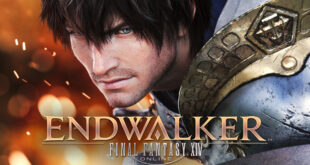[To read Develop’s comprehensive Heard About audio profiles, click here]
Jason Graves is a very careful driver, so can presumably be forgiven for very nearly back-ending the car in front on hearing news he’d successfully landed one of the most prestigious scoring gigs on the planet.
Graves had just been asked to compose the score for the next Lara Croft release, simply titled Tomb Raider.
From the outset, Graves found audio director Jack Grillo and music director, Alex Wilmer to be kindred spirits.
“Everything they were proposing about the role and placement of music just had me smiling and nodding my head,” confirms Graves, who reveals that a thematic score would be the order of the day with the music team. Similarly, supporting the intensity and stress of combat, and wanting to focus on the emotion of a Lara Croft just starting out, fresh from college – not tough and invincible, but a vulnerable archaeologist, was a key concern.
“I was apprehensive about the main theme and figured it would go through 20 or 30 iterations, but amazingly, my first solo piano composition survived intact, after some experimentation to put it through its paces with mock-ups showing how it would sound as a big action cue, or a more heroic, positive piece,” says Graves.
Throughout, Grillo and Wilmer demonstrated a continual openness to new approaches and a determination to evaluate the composer’s music in context.
“I loved the fact that Alex never said: ‘This is how we’re going implement music throughout. We have to follow this model’,” explains Graves. “He was receptive and encouraging – the absolute life-blood for a composer.”
TIME WELL SPENT
Graves also benefited from another relative luxury – that of time. Working on the three-and-a-half hours’ worth of music content over a two-year period allowed him space to walk away and ‘cleanse his musical palette’ before returning with renewed vigour.
“I was able to compose as the game came online chapter by chapter. We would walk through the game so I could be inspired by and compose to the title itself with its amazing cinematic graphics. We kept focusing on Lara’s ‘arc’, thinking about how themes could develop as she developed. They would implement music, we’d play through again, talk about it, and tweak it. It was really the best case scenario.”
To find oneself working on such a beloved, iconic title with time and ample creative freedom is likely a rarity in the pressured business of triple-A game production, but for Graves, the level of trust afforded to him was key, and something he readily agrees may be lacking somewhat elsewhere in the industry.
“I guess if you trust a composer to give you something new and different, that’s going to be scary for some people who may feel they need to be in control of every detail, hemming you in with temp tracks and safe choices,” states Graves.
When it came to creating something original, Graves, with the enthusiastic support of the team, decided to commission a playable sculpture known simply as ‘The Instrument’.
“Some months into production, I was working on combat and exploration music and scavenging stuff from my yard to create percussion sounds – plant pots, the garbage can, a leftover roll of fencing – all invited into the studio to be ‘performed’ using various sticks and mallets,” offers Graves.
“But there’s only so much you can get from a pot. I was aware of sculpture artist Matt McConnell, and his work via Facebook. I liked his aesthetic so contacted him to discuss the possibility of an all-singing, all-dancing mad percussion instrument-cum-sculpture. Improbably, it turned out he lived on the next block.
“It was a great collaboration,” Graves continues. “He’s a super guy whose workshop I can walk to in minutes.”
INSTRUMENTS OF CHANGE
McConnell’s workshop enables him to weld metal, make glass, build with pipes and create all manner of contraptions. That meant Graves and his new creative collaborator could work together on the kinds of sounds needed. They quickly went about categorising those into sections: metal instruments, glass instruments and so on.
“Having studied the concept art, he came up with a design for a sculpture that you could play which would provide a sonic signature for the score,” states Graves.
“A good example is the first 10-to-15 minutes when you’re inside this cave trying to escape. More or less that entire section’s music was created using the sculpture – layer upon layer of me hitting and bowing it. The bowls on ‘The Instrument’ hit very softly with yarn mallets, plus lots of reverb, became like the island’s voice – it’s a constant throughout – a device to underscore the mood and plot progression. A character will say, ‘We’re never going to get off this island,’ and you’ll hear that resonant, ritualistic sound.
“A combination of layered interactive cues and micro-scoring means the music is very interactive and progressive, constantly moving forward – the way a movie would be working. Although it wasn’t my goal to sound like a film, nevertheless, I really love the resulting effect where the music kind of takes a step back and works more subtly. It supports the game, but it’s not in your face – and I think that’s the best of both worlds.”
This article was originally published in Develop #136, March 2013

 MCV/DEVELOP News, events, research and jobs from the games industry
MCV/DEVELOP News, events, research and jobs from the games industry



